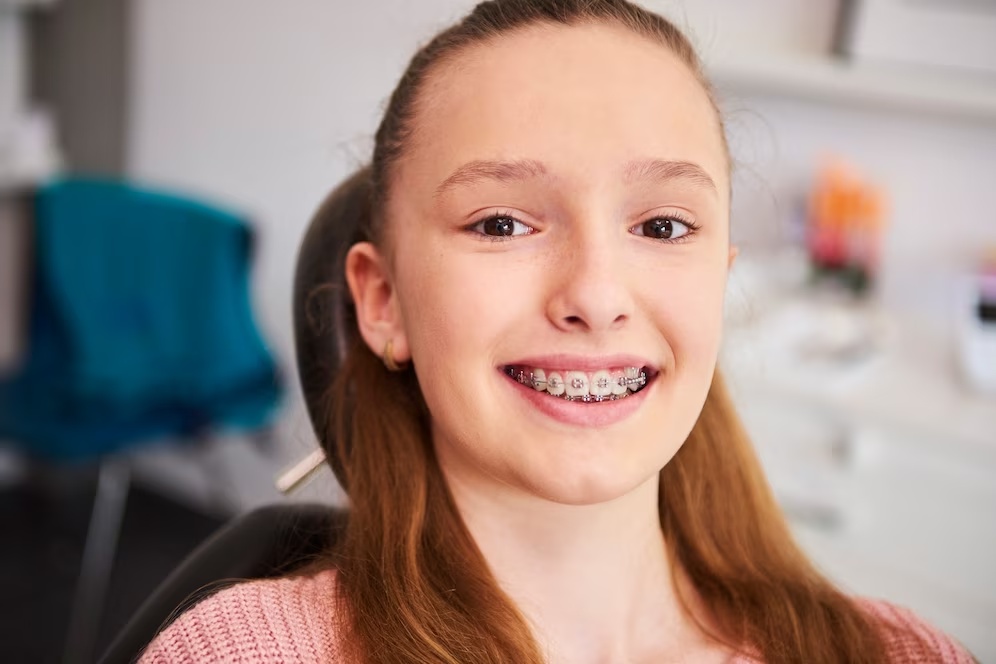
The decision to get braces is often one that both parents and children need to make together. There are many factors that go into this decision, including the severity of the malocclusion (poor teeth alignment), how early you want your child to start orthodontic treatment, and whether or not your family has a history of dental issues. As a parent, you may have questions about when it’s best for your child to get braces.
The age of 10 is when most children start losing their baby teeth
Most children start losing their baby teeth around the age of 10.
This is when the permanent teeth begin to come in and replace them, so if your child has missing baby teeth, they may need braces. If all their permanent teeth are in place, it’s unlikely that they’ll need orthodontic treatment at this time.
Braces can be fitted before or after the permanent teeth have grown in
Braces can be fitted before or after the permanent teeth have grown in. If your child has had all their permanent teeth, it is easier to see if they need braces. However, if your child has a few missing teeth and is still growing, it may be harder for you to tell if they need braces until their adult teeth come through.
In some cases, it’s better to wait until your child has all their permanent teeth before you consider braces
There are some circumstances where it’s better to wait until your child has all their permanent teeth before you consider braces.
If the adult teeth are crooked, they can affect how the permanent teeth come in. If the adult teeth are too crowded or too small, this could also cause problems for the permanent ones. If your child is getting their first set of braces at an older age (after about age 10), it’s best to wait until then so that any issues with their adult teeth won’t affect how well their new braces fit on them!
It’s never too late to start looking into orthodontic treatment
It’s never too late to start looking into orthodontic treatment and consultation with an orthodontist. The sooner you start, the better the results will be in terms of your child’s teeth, jaw and smile. However, even if your child is older than 12 years old, it may still be possible for them to benefit from early intervention or preventive care.
If you’re wondering how old is too old for braces, there really isn’t one definitive answer because every case is different: some people develop crooked teeth as early as age 2 or 3; others don’t see any signs until they’re teenagers; while some adults never have problems at all (but most do).
Most orthodontists recommend that children get braces between the ages of seven and fourteen. It’s best to start treatment before the permanent teeth come in, when there are more opportunities for movement and growth.
However, kids need proven dentistry for children and orthodontic treatment after the permanent teeth have erupted. If you’re concerned about your child’s smile, talk to your dentist or orthodontist about whether braces might help straighten crooked teeth or improve spacing issues.
Do I want my child’s smile to be perfect?
When kids are young, their teeth are still growing. The sooner the dentist can get rid of crooked teeth or spaces, the better they’ll look later on.
That’s why many orthodontists recommend getting braces when your child is between 7 and 12 years old. This is called “early intervention” and is usually more effective than waiting until later in life.
If you’re thinking about getting braces for your child but aren’t sure if they’re ready yet, talk to your dentist or orthodontist about what he or she recommends.
Do they need their teeth fixed now? If so, get them braces as soon as possible. They’ll feel better about themselves because they’ll have a great smile and won’t have to worry about how their teeth look when they smile or talk with other people. The earlier you start treatment, the better the results will be. This means that if your child has crooked teeth or spaces between them, they’ll be able to correct these problems while they’re still young and growing.
How can I tell if my child needs braces?
Most children who need braces will have teeth that overlap or protrude at the front, bottom or top of their mouth. Other common signs include gaps between teeth or crowded teeth. If you’re concerned about your child’s smile, talk to your dentist about getting a professional opinion.
If you’re concerned about your child’s smile, it’s never too early to start looking into orthodontic treatment. In some cases, it may be best to wait until your child has all their permanent teeth before considering braces. It’s always best to consult with an orthodontist or dentist before making a decision about whether or not your child should have braces.